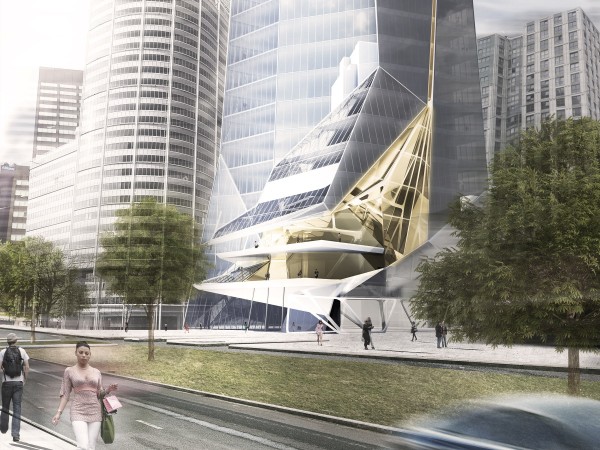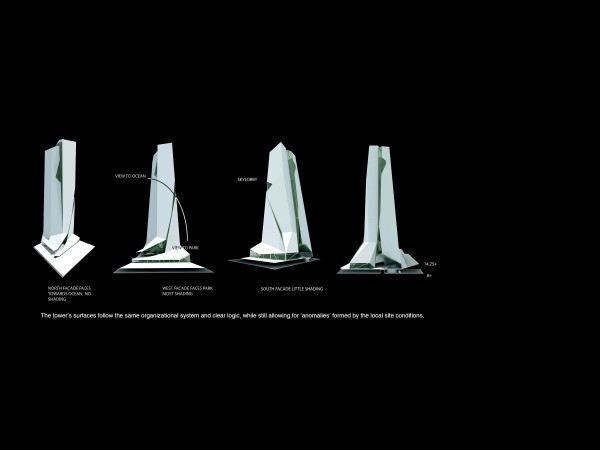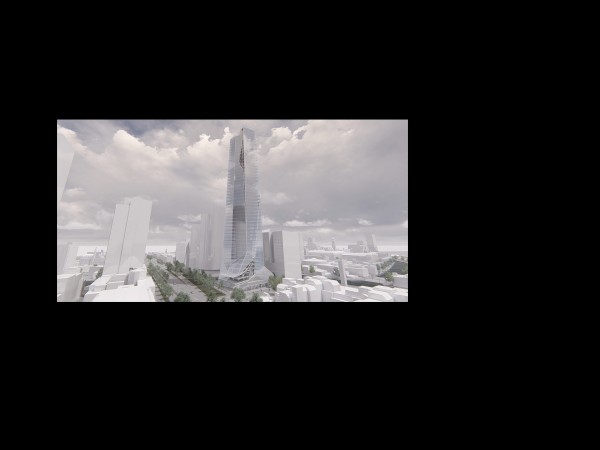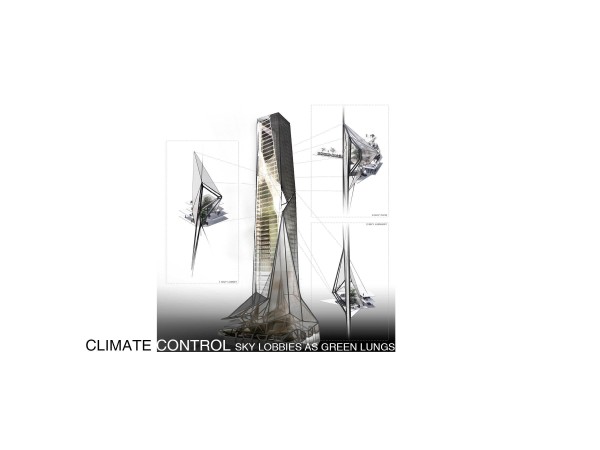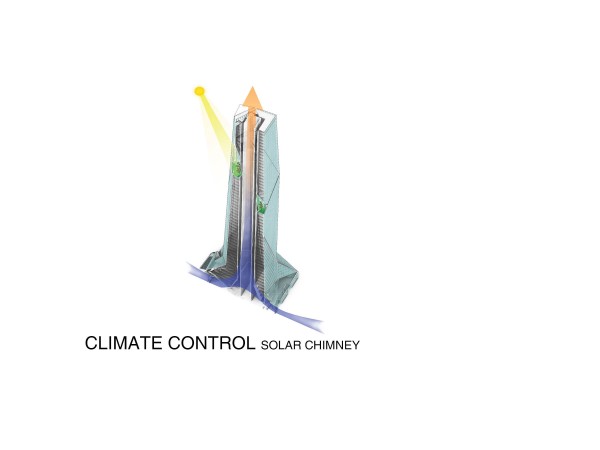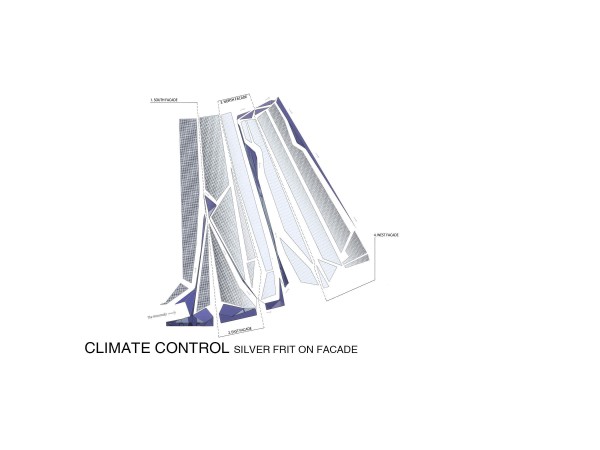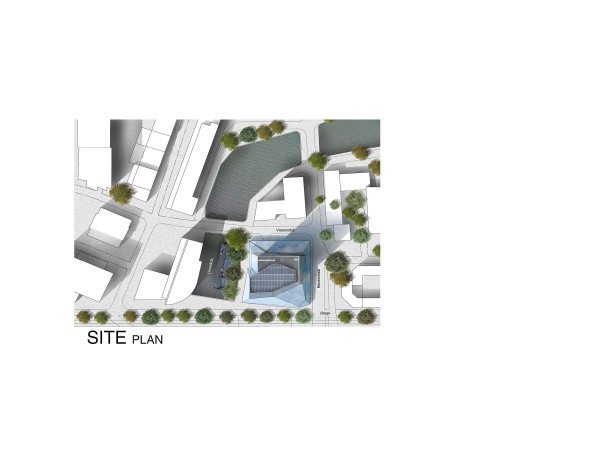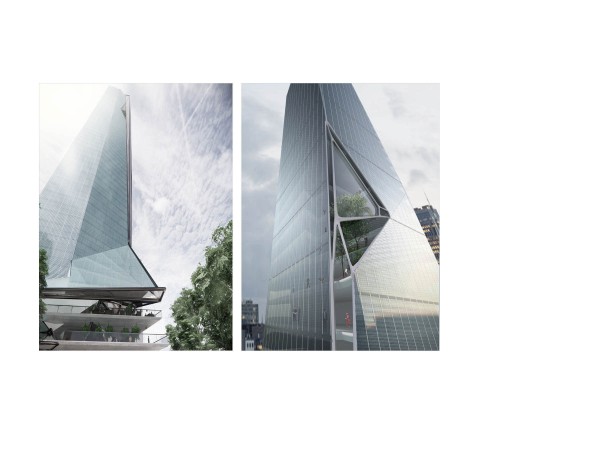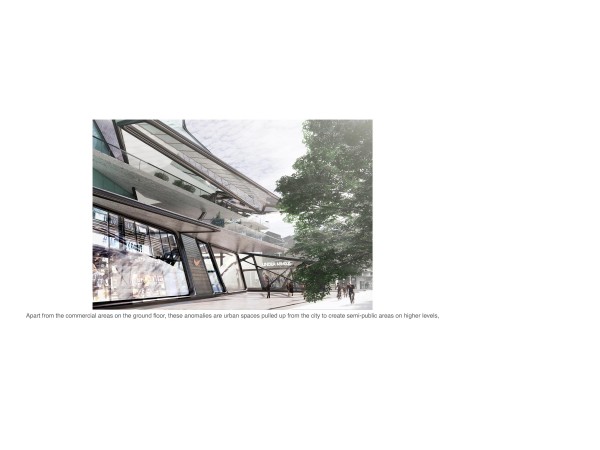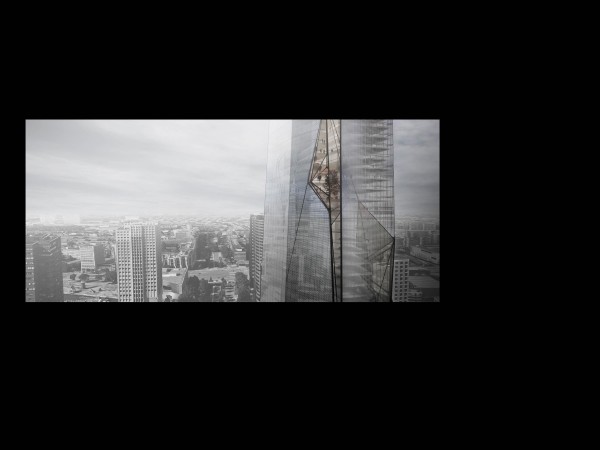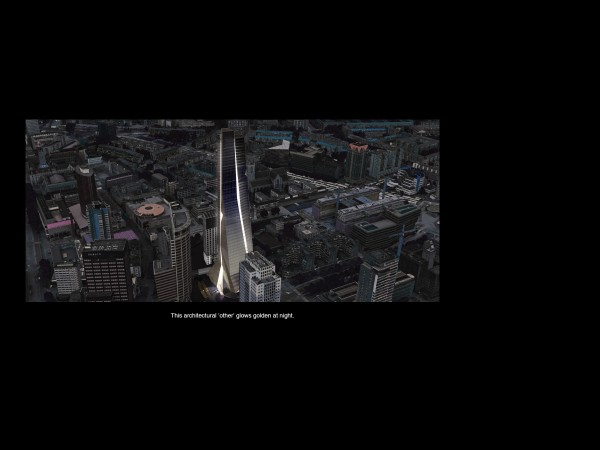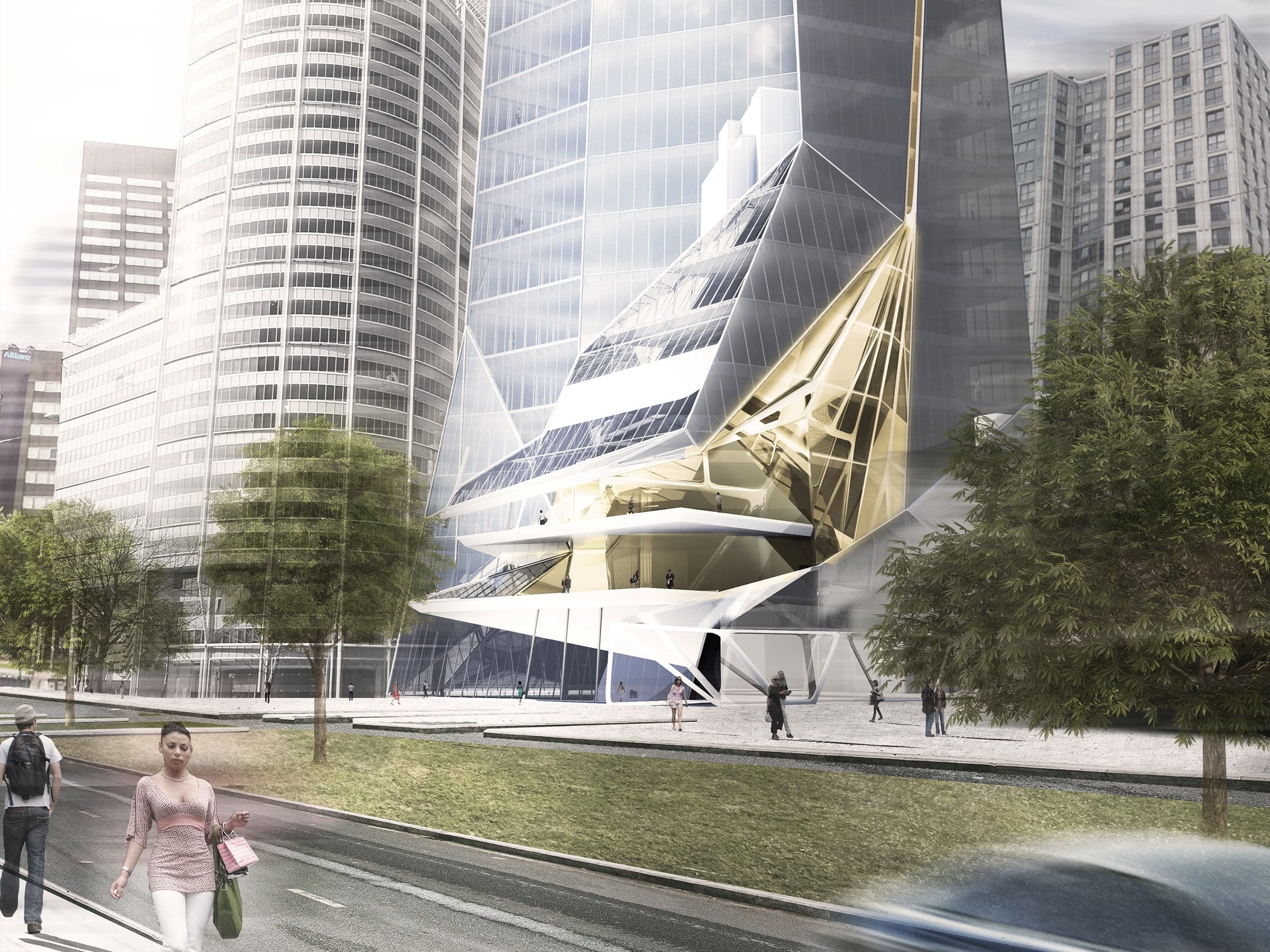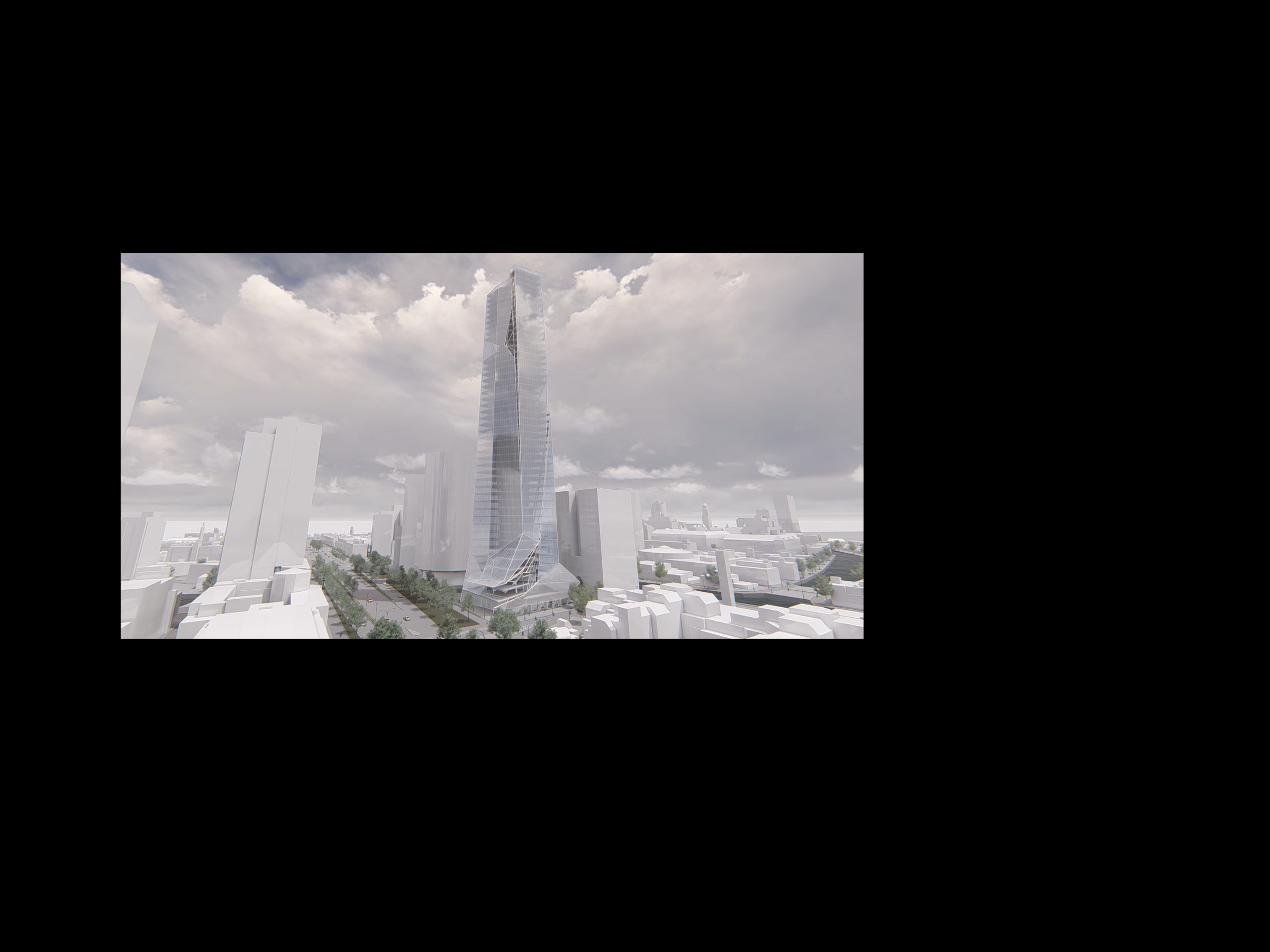
CONCEPT - For the design of the Blaak Tower, we were inspired by organic Stibnite formations, which create both structural and spontaneous spatial realities. The towers surfaces are designed to follow a self- similar spontaneous organizational system that follows a clear logic, while allowing for “anomalies”. These anomalies are found on the ground floor of the tower and continue up as sky lobbies containing urban spaces pulled up from the city to create semi-public areas on higher levels, such as gym areas, a library, meeting rooms and a restaurant. The triple height skylobbies function as green crystalline spaces allowing them to function as green lungs for the tower; with bio filtration, natural cooling & filtration and reduction of energy use. The resultant energy –efficient and self-sufficient tower creates its own biome and micro climate, expressed in it’s unique crystalline elongated shape, with its own character / identity.
LEED SILVER // Passive Cooling and Heating - The tower incorporates structural and material innovations, and energy efficient systems. Proper building orientation to minimize solar gain while providing ample shade and air movement through outdoor public spaces year-round and indoor spaces in the cooler months will optimize the buildings’ energy efficiency. Other, more specific strategies include architectural features and structurally glazed façade systems that reduce solar gain; the use of landscaping to reduce temperatures without energy intensive air conditioning; the use of photovoltaics and fiber optics to light corridors, parking structures, and other internal spaces that require diffuse light; and the use of low voltage LED’s for certain lighting features. Hot water will be provided by rooftop vacuum tube solar panels and the reduction of the water demand through the use of high efficiency appliances will further limit wasteful use of water. Specifically, the tower’s silver frit pattern creates a “climate veil” on the tower’s facade, thus reducing heat gain on the warm elevations while cooling the overheated areas, while still creating un-obstructed views. Inside the building, the frit pattern is invisible; but glare and overheating is reduced. The tower’s tapered formation also creates a solar chimney, a type of passive solar heating and cooling system that can be used to regulate the temperature of a building as well as providing natural ventilation. The tower design aims to achieve LEED Silver and an estimated rating of at least 75. The tower’s openable windows, allow for natural ventilation, and react to the predominant West wind direction, and the multi-story glass sky-lobbies cool and filter the air, as “green lungs”.
MIXED-USE - The tower’s structurally glazed surfaces fold down and extend their surfaces to create space for above grade parking and retail areas. Recent developments have proven the importance to be self-sufficient, the tower with it’s mix of private and commercial programs is a perfect example of such a micro-climate. Inhabitants would not have to leave the tower to survive a close-down. Cantilevering surfaces extend at the lower levels to facilitate beautifully naturally lit public retail and hospitality spaces, natural light reaches deep into the lobby where we also find the private entrances for the apartments and hotel above.
